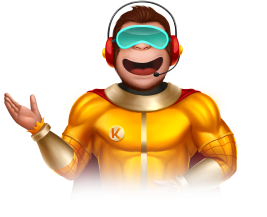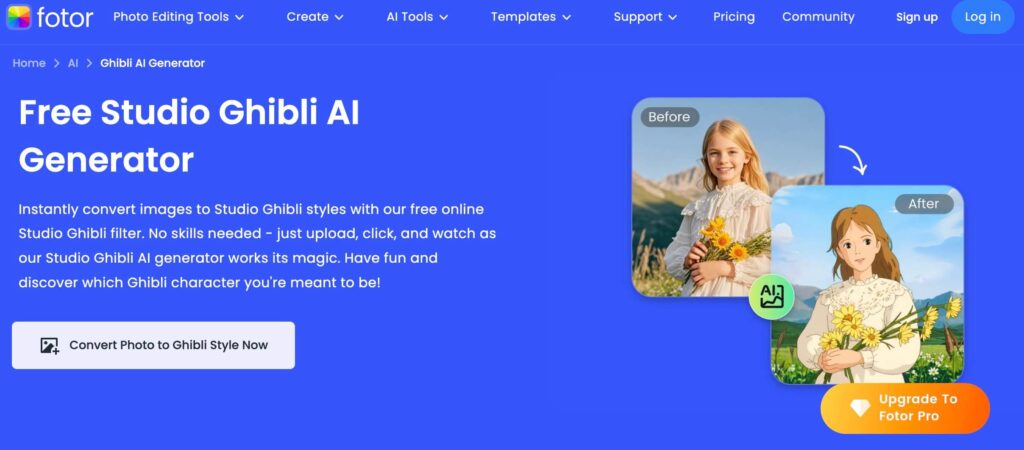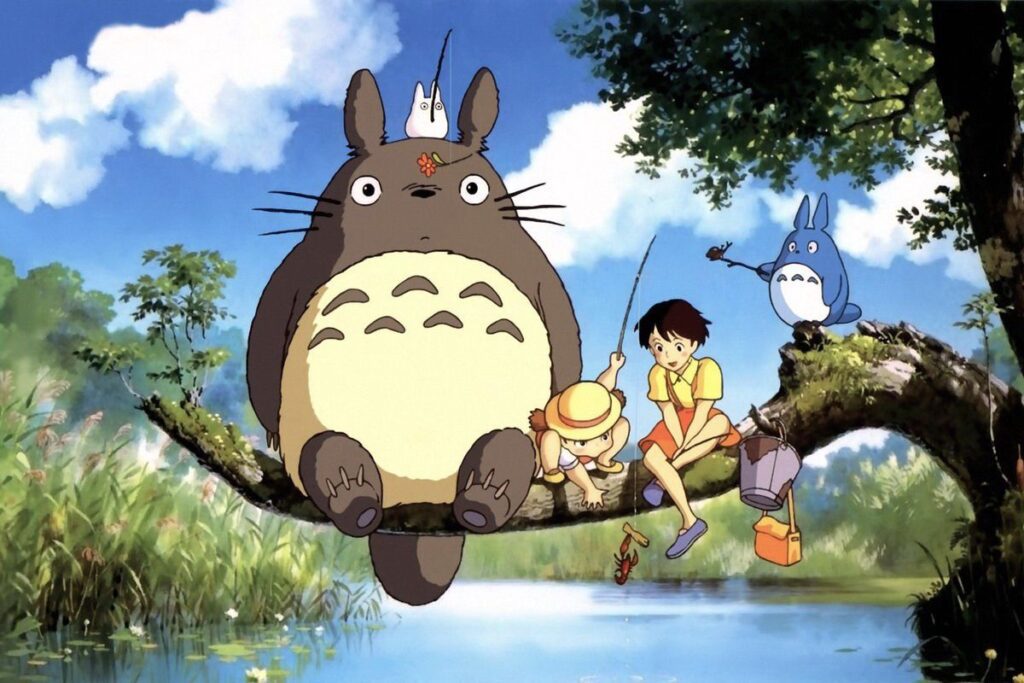Studio Ghibli Art Style Images: Breaking Down The Viral ChatGPT Trend
From the Ice Bucket Challenge to the Dress Color Debate, from Ellen’s iconic Oscars selfie to the vibrant Barbiecore wave, viral moments have defined social media’s last decade. Among the latest is the Studio Ghibli Art trend, where feeds overflowed with images transformed into the studio’s whimsical, anime-inspired style.
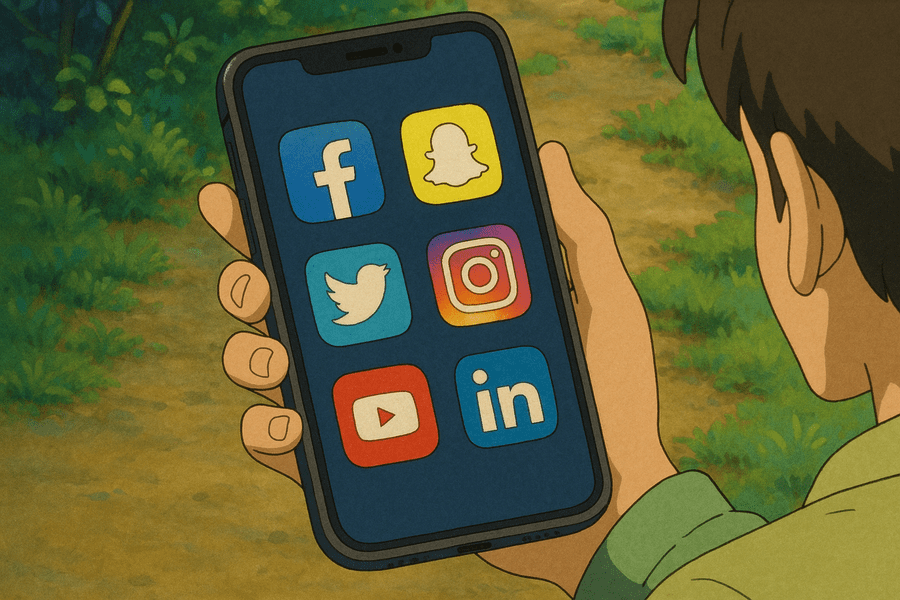
Reimagined memes like “Distracted Boyfriend,” celebrity portraits, and everyday selfies took on the soft hues and nostalgic charm of Studio Ghibli Art, captivating users worldwide. These warm, anime-style visuals felt like a comforting escape, instantly grabbing eyes and melting hearts.
But then this raises a big question – is that all art amounts to—a fleeting visual treat? What about the effort that goes into making art, the imagination, and the countless hours poured into creating a style that sparks trends?
In this blog, we’ll unpack the rise of the viral Studio-Ghibli art phenomenon and the debates it’s ignited. Without further ado, let’s dive in.
- The AI-Fueled Studio Ghibli Art Trend – An Overview
- What Defines the Iconic Studio Ghibli Art Style?
- GPT-4o and the Rendition of the Studio Ghibli Art Style
- The Ethical Aspects and Copyright Concerns of AI-Generated Studio Ghibli Art Style
- Broader Implications of the Viral Studio Ghibli Art Style Trend: AI, Fandom, and the Future of Creativity
- Charting the Path Forward for Art and AI
The AI-Fueled Studio Ghibli Art Trend – An Overview
Did you notice the sudden explosion of Studio Ghibli art style images across platforms like Twitter, Instagram, Reddit, and Facebook?
From the CEO of OpenAI, Sam Altman, to celebrities like Mike Tyson, brands like Morris Garages several iconic names and brands shared their own Ghibli-fied versions on their social media pages.
My happy place pic.twitter.com/VgBq38Y4ix
— Mike Tyson (@MikeTyson) March 26, 2025
Sometimes we make the trend and sometimes the trend makes us.
— Morris Garages India (@MGMotorIn) March 27, 2025
MG Comet EV, Ghibli-Styled.#StudioGhibli #TheStreetSmartCar #MGCometEV #MGMotorIndia pic.twitter.com/PqnmiUS2z4
The trend was ignited with the launch of native image generation powered by GPT-4o in ChatGPT. This allowed both free and paid users to instantly generate AI art from simple text prompts. The fact that this AI model could easily mimic styles is what grabbed attention. Quickly, people started sharing Studio Ghibli art style versions of their favorite memes and their own photos – one thing led to the other, and this soon created ripples on social media.
So much so that OpenAI couldn’t handle the overflowing requests, and Sam Altman announced the temporary imposition of rate limits to keep the image generation requests under control.
it's super fun seeing people love images in chatgpt.
— Sam Altman (@sama) March 27, 2025
but our GPUs are melting.
we are going to temporarily introduce some rate limits while we work on making it more efficient. hopefully won't be long!
chatgpt free tier will get 3 generations per day soon.
Popular image editing tools like Fotor and Getimg.ai announced Studio Ghibli filters to let users instantly convert their images into the Studio Ghibli art style.
Leveraging the buzz, Netflix recently announced that they have secured the streaming rights for some of the best-loved films from Studio Ghibli.
From February 2020, 21 films from the legendary animation house Studio Ghibli are coming exclusively to Netflix.
— Netflix ANZ (@NetflixANZ) January 20, 2020
We’re proud to bring beloved, influential stories like Spirited Away, Howl’s Moving Castle and My Neighbour Totoro to first-time viewers and high-flying fans alike. pic.twitter.com/955uiYAzA1
Netflix’s move here signals two things: this was no fleeting hype on social media but rather a trend worth building on. A trend that marked a major social media moment in 2025! Second is that there are many ways in which brands can hop on trends, without violating intellectual property terms – by collaborating with original artists or popularizing original content, as Netflix did in this case.
What Defines the Iconic Studio Ghibli Art Style?
Now that we have spoken in detail about the trend itself, let’s talk about the charm of the Studio Ghibli art style, because as designers, we love the distinct elements that make this aesthetic so timeless and inspiring for creatives worldwide.
Studio Ghibli is a renowned Japanese animation studio, the name behind iconic movies like My Neighbor Totoro and Spirited Away. The distinct Studio Ghibli art style, which was recently popularized by social media and OpenAI’s art generation, was handcrafted by the co-founder of Studio Ghibli, Hayao Miyazaki.
Meticulous details, focus on natural elements, emotional depth, and distinct takes on humanity are a few things that set the Studio Ghibli films apart.
As for the signature aesthetics, the Studio Ghibli art style consists mainly of soft and noticeably warm color palettes, with the overall style evoking a sense of whimsy and wonder. Additionally, one of its most defining features is the character design, which prioritizes relatability and genuine emotion over exaggeration.
When you observe films from the studio, you’ll notice some common traits like:
- The use of low-saturation backgrounds
- Subtle gradients replacing harsh shadows
- Organic color combinations
Additionally, the characters in these movies often feature large, expressive, luminous eyes that communicate and evoke a wide range of emotions that connect with the audience. Moving on to the animation, the hand-drawn movements create that fluid, nostalgic sense of realism that feels tangible. No wonder the movies from this animation studio have a lot of avid fans around the world.
GPT-4o and the Rendition of the Studio Ghibli Art Style
Is ChatGPT able to capture the Studio Ghibli art style? We’ll let you be the judge. Here’s a stock image from Pexels.
And here’s the Ghibli-fied version of this image as reimagined by ChatGPT. What do you think?
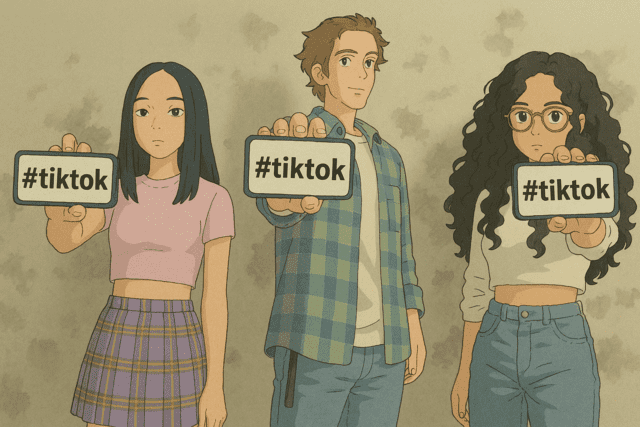
So, what does ChatGPT really do when you prompt for Studio Ghibli art style images?
- It applies the key visual characteristics of Ghibli-style like warm and cozy colors and low saturation effects, with an overall nostalgic glow.
- It softens the lighting.
- Enhances natural details and adds a touch of whimsy to the expressions.
- Preserves or enhances specific details you mention in your prompts. You can use this by adding details about adding or removing any particular subject or element in your image. Or if you are generating images from scratch, add as many details as you can about what appears in the scene, the foreground, and background, and details with respect to colors and text, if any.
If you haven’t already tried this trend and wish to experiment with it, here are some very simple prompts you can use. Add as many details as you can for more precise results.
“A whimsical Ghibli-style image of […]”
“A Studio Ghibli-style scene of […]”
“Convert this image into a peaceful Ghibli-style scene.”
“Give this photo a fairytale Ghibli setting.”
“Make this image look like a scene from a Studio Ghibli film.”
The Ethical Aspects and Copyright Concerns of AI-Generated Studio Ghibli Art Style
Yes, the Studio Ghibli Art style is charming – images created in this style
Negative response from fans & critics
From the awe-inspiring floating island of Laputa in Castle in the Sky to the child-like wonder and distinct visual styles in Ponyo on the Cliff by the Sea, every one of the films from Studio Ghibli has had its way of transporting viewers into a world of awe. No wonder, fans weren’t exactly happy when the internet was flooded with AI-generated Ghibli-fied images.
Miyazaki spent his entire life building one of the most expansive and imaginative bodies of work, all so you could rip it off and use it as a filter for your vacation photos.
— Robbie Shilstone (@shilstone_arts) March 26, 2025
Not into this one bit. Protect artists.
In fact, an old video of Hayao Miyazaki condemning machine-generated art has resurfaced and is being shared by fans and creatives worldwide.
Respect for the artist!
What about the human effort that goes into creating such art? For instance, the popular Studio Ghibli movie The Boy and the Heron reportedly took seven years and the dedication and hard work of 60 animators. And the below image was generated on ChatGPT in hardly a minute.
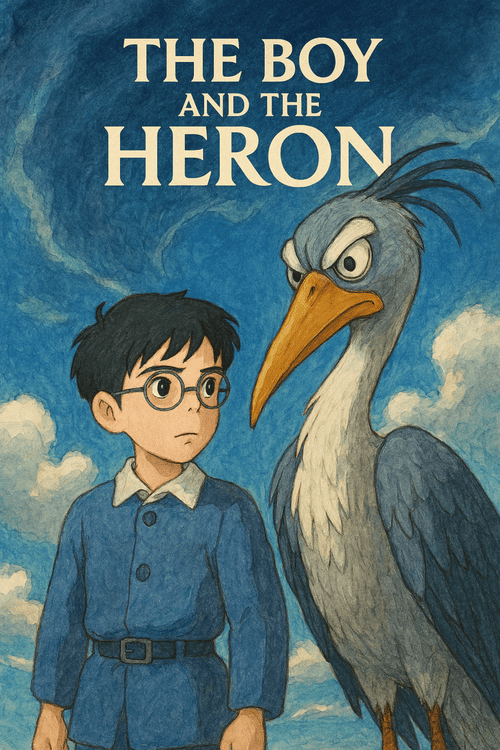
Some fans and critics have been responding to the Studio Ghibli art style trend and sharing posts highlighting the immense amount of hard work that goes into bringing these characters to life.
Since Studio Ghibli is trending, worth noting the mind-boggling effort Hayao Miyazaki and his team put into a film.
— Trung Phan (@TrungTPhan) March 26, 2025
Each has 60k-70k frames, all hand-drawn and painted with water color.
This 4-second clip (“The Wind Rises”) took one animator 15 months to do.
In the documentary… pic.twitter.com/BwvipsyVCl
All of these keep bringing up the fact that AI tools often lead to displacement fears. In fact, a majority of the skepticism and friction to adopting AI springs from trends like these. Remember all those “Starry Night” versions of images that people shared when AI image generation was gaining traction a couple of years ago?
Artists fear that brands might replace human creativity with AI tools. But let’s get real – AI can simplify the process of mimicking popular styles like the Studio Ghibli art style, but nothing beats the real thing. And trends like these fade away, but authentic art gets etched in the minds and hearts of fans and stands the test of time.
Copyright concerns
The accuracy with which AI tools like ChatGPT can replicate visual styles is shockingly good. This raises the question of copyright violations, especially when creators and brands, merely to hop on trends, experiment with styles like these, and use the designs in commercial applications.
In this case, one could argue that a visual style in itself cannot be copyrighted; only works of art can be. That is, you cannot copyright Cubism, but you can copyright a particular artwork created in a Cubism style. However, the work and livelihood of artists behind such iconic styles is a big question mark.
The lack of clear AI regulations, both with respect to the use of artists’ works for training to the use of AI-generated art, is the one thing worth highlighting at this point. For that matter, using copyrighted material for training AI without a license or compensation is the subject of ongoing lawsuits against AI companies like OpenAI.
While Studio Ghibli is known for diligently protecting its intellectual property, it hasn’t issued a specific official statement or taken public legal action regarding this particular AI trend as of mid-April 2025. Some sources even highlight that Studio Ghibli “may be able to take legal action against OpenAI.”
OpenAI’s response
How has OpenAI responded to concerns about ethics and copyrights raised by users around the world? Their image generation model imposes some restrictions on what you can request and the types of images you can process.
Here’s how ChatGPT responded about the ethical considerations around the use of the Studio Ghibli art style image generation on the platform:
- About the use of characters from Studio Ghibli films – “Studio Ghibli’s specific characters (like Totoro, Chihiro, etc.) are copyrighted. We can’t directly use or recreate them.”
- About the commercial use of images generated with ChatGPT – “You can use the generated images for personal or creative projects, but commercial use (like selling prints or using in branded ads) can get tricky unless it’s your original concept and doesn’t imply affiliation with Studio Ghibli.”
- About images uploaded to process in Ghibli-style – “Uploaded photos must not feature celebrities or public figures, unless it’s satire, parody, or editorial commentary (and even that comes with nuance).”
Broader Implications of the Viral Studio Ghibli Art Style Trend: AI, Fandom, and the Future of Creativity
What does the Ghibli-style trend tell us about modern fandom?
According to YouTube’s Culture & Trends Report, fandom is a crucial topic for brands looking to engage their audience. As a matter of fact, about 74% of the Gen Z audience reportedly love seeing brands engage with things they are fans of.
When tools like ChatGPT and others introduce ways to tap into fandom, they are democratizing creation (of course, with caveats). These tools allow fans without design expertise or artistic skills to create visuals inspired by their favorite characters or movies. In short, when there is a visual fan culture, tools and advancements like the native image generation on ChatGPT lower the barriers and allow more people (and fans) to participate in the trend.
In a way we can also say that these AI tools are adding momentum to Remix Culture, but in new forms. They are allowing fans to expand their creativity and adding a touch of personalization to the mix.
AI & the future of creativity
Traditionally, creativity has been seen as a trait unique to humans, but the recent wave of AI tools and advancements has challenged this norm.
In its truest sense, AI should be treated more like a collaborative tool, not one meant to replace human talent, to augment it. Imagine animators using AI to draft backgrounds faster, designers generating quick reference images, or even experimenting with color palettes.
In other words, AI tools can be used to generate rough drafts on which human illustrators and designers work to refine the style and add finishing touches to make the design unique to the brand.
The growth and virality of the Studio Ghibli art style reiterates the need for:
- Transparency in AI training disclosures so that artists can know how their work is being used and can conveniently opt out from their work being used to train specific models.
- Fair compensation models so that source artists can be credited and can receive royalties when such trends explode based on their work.
Charting the Path Forward for Art and AI
To conclude, the rapid surge of the Studio Ghibli art style trend is a classic example of how fandom, technology, and creativity meet in today’s digital age. The ease with which people hopped on the trend and the mixed response the trend received expose the complicated challenges that come with bringing AI into the creative realm.
The sentiments of fans and the dangers of creative work and styles being copied easily remind us of the issues of copyright, data ethics, and the future role of human artists. They also come as a stark reminder of the fact that AI innovation and advancements should be balanced with respect for artistic integrity and creators’ rights.
So, what’s your take on the Studio Ghibli art trend?
